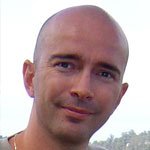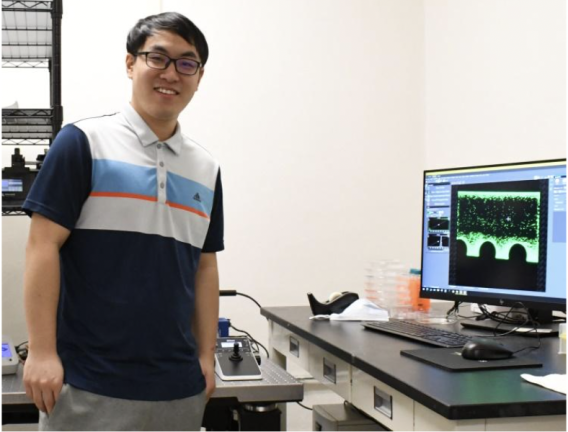The Heinz G. Stefan Fellowship & Distinguished Lecture by Dr. Sergio Fagherazzi
Presentation of the Heinz G. Stefan Fellowship
Distinguished Speaker: Sergio Fagherazzi, Professor of geomorphology, hydrology, and coastal and marine geology in the Department of Earth and Environment at Boston University
Title of Lecture: Monitoring Coastal Wetlands Using Remote Sensing Data: the NASA Delta-X project
Abstract: The propagation of tides and riverine floodwater in coastal wetlands is controlled by subtle topographic differences and a thick vegetation canopy. High-resolution numerical models have been used in recent years to simulate fluxes across wetlands. However, these models are based on sparse field data that can lead to unreliable results. Here, we utilize high spatial-resolution, rapid repeat interferometric data from the Uninhabited Aerial Vehicle Synthetic Aperture Radar (UAVSAR) to provide a synoptic measurement of sub-canopy water-level change resulting from tide propagation into wetlands. These data are used to constrain crucial model parameters and improve the performance and realism of simulations of the Wax Lake wetlands in coastal Louisiana (USA). A sensitivity analysis shows that the boundary condition of river discharge should be calibrated first, followed by iterative correction of terrain elevation specified originally by a Digital Terrain Model derived from LiDAR measurements. The calibration of bed friction becomes important only with the boundary and topography calibrated. With the model parameters calibrated, the overall Nash-Sutcliffe model efficiency for water-level change increases from 0.15 to 0.53 with the RMSE reduced by 26%. In areas with dense wetland grasses, the LiDAR signal is unable to reach the soil surface, but the L-band UAVSAR instrument detects changes in water levels that can be used to infer the true ground elevation. The high spatial resolution and repeat-acquisition frequency (minutes to hours) observations provided by UAVSAR represent a groundbreaking opportunity for a deeper understanding of the complex hydrodynamics of coastal wetlands.

About the speaker: Sergio Fagherazzi studies geomorphology, hydrology, and coastal and marine geology. His research is oriented in three main directions: the morphological modeling of the continental shelf—formation and evolution of riverine networks during sea-level lowstands and subsequent channel filling during high-stands; the study of the hydrodynamics and morphology of salt marshes—observation, understanding, and modeling of creeks and channels developing on a salt marsh surface; and the numerical study of equations characteristic of coastal processes and hydrology—a dynamic model linking phenomena occurring at different spatial scales
Award Recipient: Guanju (William) Wei, Ph.D. student in Civil, Environmental, and Geo- Engineering

Talk Title: Microfluidic Investigation of the Biofilm Growth under Dynamic Fluid Environments
Abstract: Biofilms are consortiums of bacterial cells stick together by extracellular polymeric substances (EPSs). Biofilms can increase pathogenic contamination of drinking water, cause biofilm-related diseases, and alter the rate of sediment erosion in rivers and coasts. Meanwhile, some biofilms have been used for degrading polycyclic aromatic hydrocarbons (PAHs), enhancing oil recovery efficiency, and removing excess nutrients and contaminants from wastewater. Fundamental understandings of physical factors that control biofilm formation are needed yet currently lacking. Our goal is to systematically study the interactions between biofilm, flow, and particle transport, focusing on the effects of flow shear stress, different flow patterns, and surface properties on the biofilm formation process. We use microfluidic experiments, confocal imaging, numerical simulations, and mathematical modeling to study the interactions between biofilm, flow, and sediment transport. We developed imaging analysis methods using Image-J and Matlab to calculate the biofilm thickness, biofilm shape, and biofilm structure in an effort to demonstrate the effects of flows on biofilm growth. We are also interested in the biofilm's ability to bind sediment and micro-plastic particles and its effects on particle transport. We will create equations to predict the formation of biofilms under varying flow conditions. The results can be used in industrial, medical, and scientific fields to control biofilm growth.
About the recipient: I am currently a Ph.D. student in Dr. Judy Yang’s research laboratory. My academic journey began in China, where I earned both my bachelor's and master's degrees. My passion for science was ignited during my undergraduate years and has since been fueled by a deep curiosity to understand the nature of the world. In my present research, I combine microfluidic experiments and numerical simulations to study the interplay between fluid dynamics and bacterial behavior, as well as particle transport. I am especially interested in how different shear stress affects biofilm growth and, conversely, how biofilm growth impacts particle transport. Beyond the lab, I love watching sports like basketball, football, hokey, soccer, and more. In addition to sports, I enjoy playing video games, watching movies, cultivating plants, and caring for fish and turtles. What I appreciate most about our lab is the strong support and the valuable learning opportunities. I learn different skills from each lab member. Furthermore, being part of the Saint Anthony Falls Laboratory (SAFL) is an exciting experience. SAFL's multidisciplinary environment allows me to conduct a wide range of fascinating experiments.
